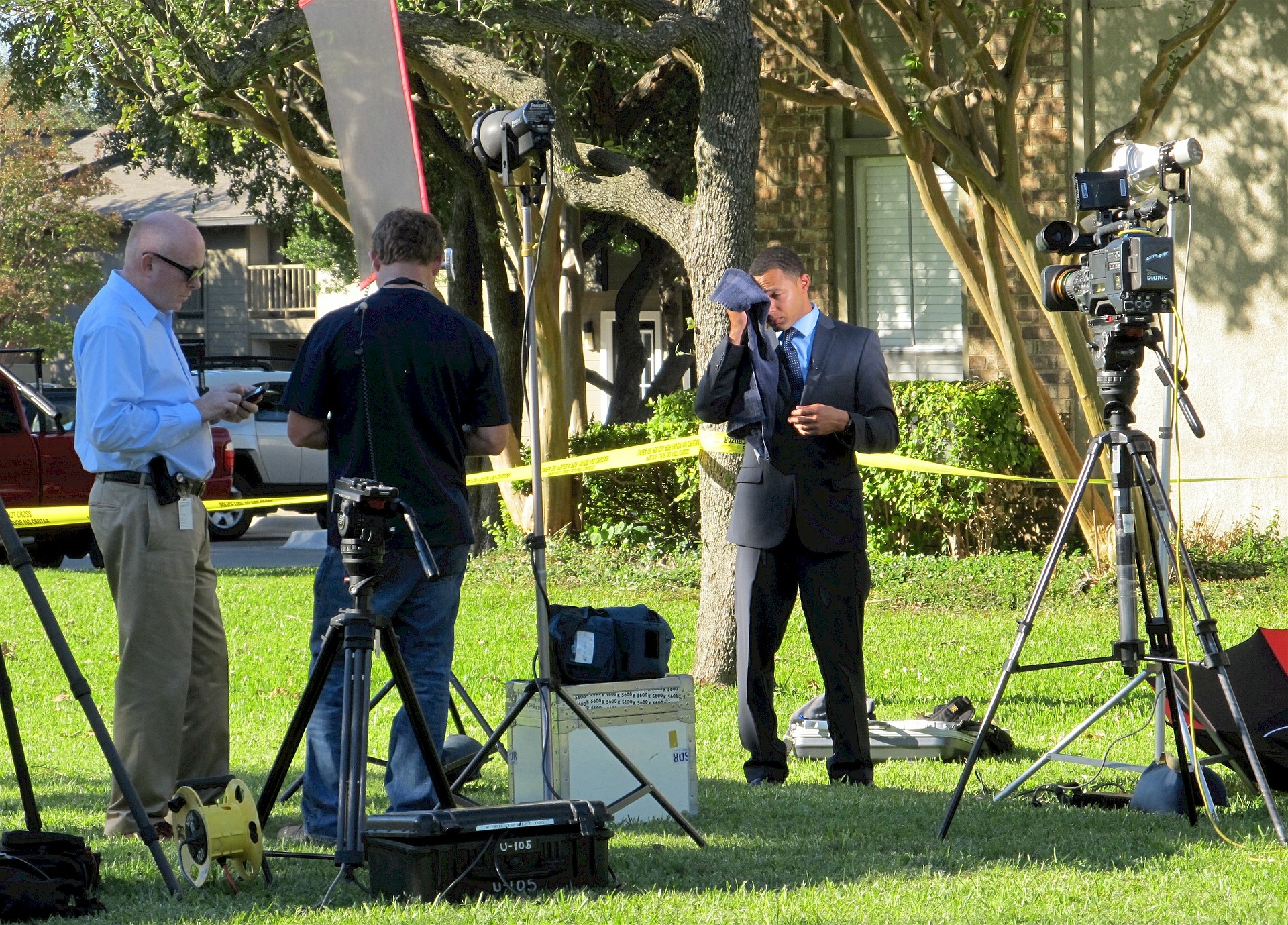Death threats are nothing new for journalists. Some reporters see them as a badge of honor, believing danger comes with the job when you’re seeking to uncover the truth.
But a recent incident at the Capital Gazette in Annapolis, Maryland, rattled even the most hardened pros when a gunman, bearing a long-held grudge against the newspaper, killed five people in the newsroom.
Other incidents point to growing safety concerns for media outlets and their employees. Just last week, a man gained access to ABC’s Sydney, Australia, headquarters and assaulted an employee. In 2015, a disgruntled former employee shot and killed a WDBJ television reporter and cameraman in Roanoke, Virginia, during a live interview. Earlier that year, two terrorists stormed into the office of the French satirical newspaper Charlie Hebdo, killing 12 in retaliation for publishing controversial Muhammad cartoons. In some cases, perpetrators signal their intent via social media, but in other instances, the acts are completely random.
This disturbing trend coupled with an increase in threats and accusations of bias fueled by a hostile political climate have prompted newsrooms across the U.S. to regroup and take a hard look at their security procedures.
Local Newsrooms Are Often More at Risk
Shortly after the Capital Gazette shooting, police in major cities quickly dispatched units to guard their news outlets. While it served as an immediate and sensible precaution, expanded police presence isn’t sustainable. Newsrooms have to look at what steps they can take to secure their facilities for the long term.
Since Annapolis, major newsrooms have beefed up their security measures. The Washington Post added security guards. McClatchy Newspapers’ D.C. bureau upgraded from “essentially nothing” to locking entryways to its newsroom and requiring employees to swipe key cards to gain access.
But local media outlets are often far more vulnerable. As Joel Simon, executive director of the Committee to Protect Journalists, explained to NBC News, “Most violence committed against journalists is not against the Washington press corps, it’s against journalists working in the local communities. If someone has a beef with you, and you’re a local reporter, it can get ugly in a hurry because you’re accessible.”
Also, local newsrooms often lack the financial resources required to implement large-scale security measures. National media can employ security guards and install advanced surveillance and detection technologies, but what measures make sense for smaller-scale operations?
Smart Steps to Increase Newsroom Security
Keep Safety Front and Center
The most effective safety plans encourage every employee to be part of the solution. They promote constant awareness and establish clear lines of communication, making it easy for employees to report threatening or unusual behavior. They’re also shared and reviewed frequently. Does the newsroom have check-in procedures for visitors? Are they followed consistently? Are employees aware they shouldn’t grant access to strangers at any entry point? Having firm plans in place to address these issues can make all the difference.
Secure Entryways and Control Access
Newsrooms can hire security guards, install video surveillance and use a variety of advanced technologies, but cost-effective security really boils down to a simple formula: secure all points of entry, and channel all visitors and employees through a single, secure entrance. Locked doors, access control technologies, such as employee ID card readers, and a bulletproof entryway at the main entrance can keep potential threats in check.
Safety Training
The more employees learn and practice how to react to potential threats, the better prepared they’ll be when a real emergency hits. For years, educational, government and other institutions practiced a “lock-down” approach to violent attacks. But current thinking has shifted to a more active response. The ALICE (Alert, Lockdown, Inform, Counter, Evacuate) Institute has trained thousands of police departments, educational institutions and businesses to more proactively respond to a violent intruder or active shooter. By scheduling active shooter response training and sharing key information with local law enforcement (security procedures, floor plans), newsrooms can establish the protocols and relationships that will help all parties respond effectively to threats.


